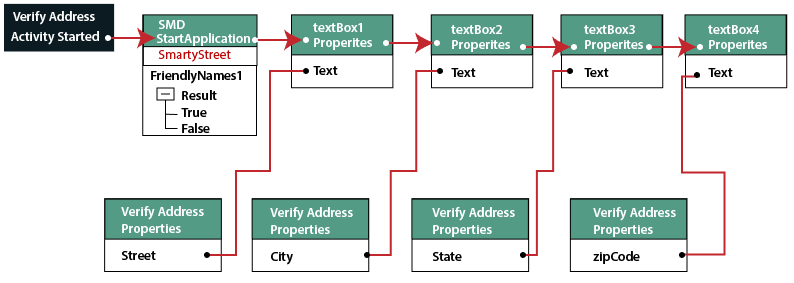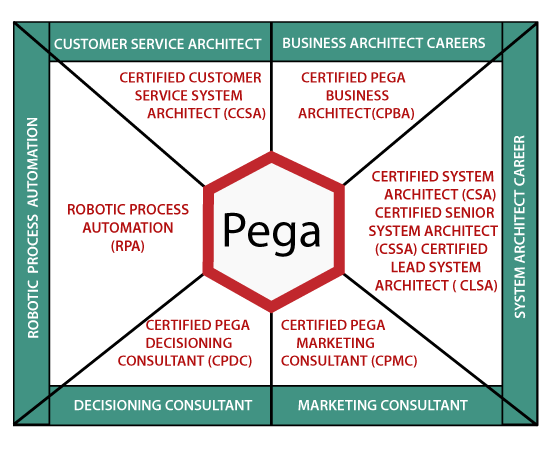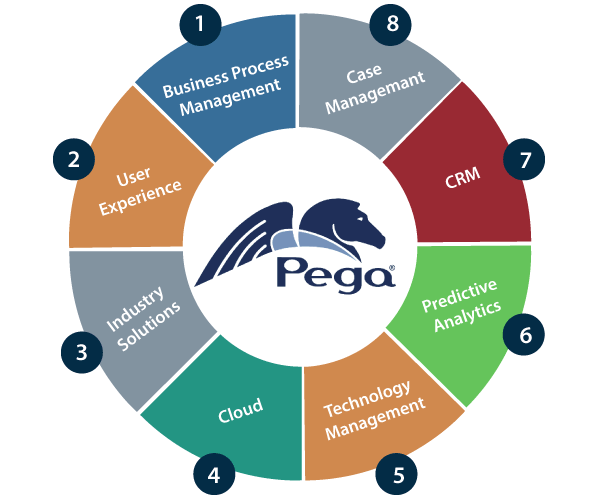Pega RPA
The Pega RPA (Robotics Process Automation) is used to add the ability of the task automation via the user interface of the existing application. Robotic automation is used to automate the repetitive routine tasks in the workflow.
The Pega can help the user to speed up the manual tasks by automating user actions. The automation is created in the Pega Robotic Studio. The latest Pega version is 8.0, which is currently available.
The organizations have reduced the tedious manual work by using Pega RPA to automate obstructing productivity and efficiency.
The user can create a batch process to large volumes of data with fewer errors as compared to manual case processing.

Figure: Robotic Automation by using Pega RPA.
The Pega systems are the leaders in cloud software for customer engagement and operational excellence.
There are several examples of Pega RPA in which the user can interact with Pega automation. These examples are Credit card, automatically driven car, and automatic claim submission.
Various modules of Pega
Following are the several career modules provides by the Pega RPA:
- System Architect Career Module
- Business Architect Career Module
- Pega Marketing Consultant
- Pega Decision consultant
- Pega Customer service Architect
- Pega Robotic Process Automation

Figure: Modules of Pega RPA.
1. System Architect Career Modules
- Certified System Architect (CSA)
The System Architect can construct, configure, and execute the Pega applications. The role of Pega CSA is crucial to carry out the Pega Project successfully.
- Certified Senior System Architect (CSSA)
The CSSA exam provides certification of Senior System Architect to increase his Pega skills. This certification allows the developer to reuse the design and construction in the Pega project across various lines of business.
- Certified Lead System Architect (CLSA)
The CLSA exam is for the certification in lead System Architect, which is a part of an elite team as well as required resources for the Pega Project.
2. Business Architect Career Modules
- Certified Pega Business Architect (CPBA)
This certification makes the architect capable enough to take part in the design and construction phase of the Pega application.
3. Pega Marketing Consultant
- Certified Pega Marketing Consultant (CPMC)
This certification is only for professionals to take part in the design and progress of the Pega Marketing Solution.
4. Pega Decision Consultant
- Certified Pega Decision Consultant (CPDC)
This career path is also for professionals who can take part in the design and development of Pega Decision management or the customer decision hub solution.
5. Pega Customer Service Architect
- Certified Customer Service System Architect
This certification concentrates on the creation of a Pega customer service solution.
6. Pega Robotic Process Automation
The Pega Robotic Process Automation is a software application that automates those task and processes which are done manually by humans.
Pega Robotic Process Automation includes Microsoft visual-studio based design tool.
By using this tool, the user can generate automation and the run time client, which runs the automation on the user's desktop and cloud-based tool. This tool assists the user to implement and handle the automation, which is developed by the user or developer.
Pega RPA Advantage
Following are the advantages of Pega RPA (Robotic Process Automation):
1. Since the processes are completed more rapidly in Pega technology, it saves a lot of human efforts.
2. The Pega tool is cost-effective for the manual and repetitive tasks as it reduces the number of FTEs.
3. The employees become more productive by using the Pega tool.
4. It reduces manual data edits.
5. The Pega tool of Robotic Process Automation increases data quality.
6. It also reduces compliance risk.

Figure: Advantage of the Pega RPA tool.
Pre-requisites of Pega RPA
There are some pre-requisites of Pega RPA that are given below:
- The user must have .NET and Java programming experience.
- The Pega RPA tool requires the knowledge of the business processes and the policies that are used in their companies.
- The Pega user needs a basic understanding of business application development.
- The Exposure of Microsoft Visual Studio or any other integrated development environment is required in the Pega RPA tool.
Pega RPA Disadvantage
The Disadvantages of RPA tool Pega are given below:
- Since the RPA Pega is a robust platform, it requires a lot of technical help for its set up.
- The Pega RPA academy is a boundless resource, but it is only available for its clients.
- The Pega tool of RPA is low- code platform; that's why it doesn't create excitement for the developers as they usually like to develop new and exciting languages.
Conclusion
The Pega RPA tool helps the underdeveloped applications of a particular technology to automate the routine and standardize tasks every day. This tool creates higher productivity and value with lower investment.
This technology tool frees human resources from routine and repetitive tasks. It also allows the user to focus on the core business objective instead.